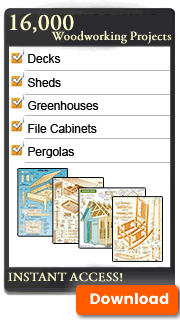Home Handy Tool Kits
If you’ve just moved into your first house or just moved out on your own, you’re going to be faced with a bunch of DIY jobs and you’re going to need tools. A combination screwdriver and toy hammer from the convenience store won’t be enough and borrowing tools from a neighbor or your Dad gets old pretty fast. But at the price of tools, who can afford to just go out and buy a full set of tools and besides, how do you know what your really need? Here’s some ideas on how you can go about building your own home hand tool kit while not blowing up your credit cards up as well as some suggestions on what you should be putting into that tool kit.
Start by buying tools only when you need them
- You can keep the cost of building your tool kit low if you just buy tools as you need them. For example, if you’re hanging a picture you need a hammer, a level and possibly some pliers, you don’t need a crescent wrench or a pry bar. So when you go to buy tools, just buy the ones you need for the job at hand. Buy others only as you need them.
- Some tools are commonly sold in sets (screwdrivers, pliers) so even when you set out to buy only what you need you’ll be getting an added bonus at building you tool kit faster
Buy quality
- This sounds expensive, but when you’re buying tools you usually get what you pay for. Buying cheap tools is a false economy, since they often don’t work well, won’t last and when they break, you’ll just end up needing to buy new ones.
- Buying quality tools don’t mean you need to go all the way up to top of the line, contractor grade tools. There are lots of quality toolmakers that make good quality tools at reasonable prices. Sears Craftsmen and home store brand name tools are good quality hand tools and often come with a lifetime warranty, so you know these tools are made to last.
Watch for sales and special offers
- Sometimes you need to bend the “buy tools only when you need them” rule. Seasonally and around special days (Father’s Day for example) home and department stores often have specials on their brand name tools. Most times these are good values, so keep your eye on the ads and flyers and you can pick up some good tools at very reasonable prices.
So now we know how to build our tool kits economically, but what hand tools should actually be in our home tool kit? Here’s the basics -
- Hammer – a 16-ounce hammer with a curved claw for pulling nails is a necessity. Choose one with a fiberglass or metal handle with a non-slip rubber grip.
- Tape measure – a 10-foot retractable tape measure will do for most jobs around the house, but a 16 or even 25 footer will undoubtedly come in handy on some projects. Look for one that retracts automatically and has a locking mechanism Tape measures are often sold in groups of two or three of various lengths so watch for the specials.
- Screwdrivers – You’re going to need a small, medium and large screwdriver for at least three different screw head shapes - Phillips (X shaped), standard (- shaped) and Robertson (square headed). You may also run into a need for a Torx shaped screwdriver (five sided), but these heads are still relatively rare. Screwdrivers are also commonly sold in sets of 3, 6 or 9.
- Adjustable wrenches – “Crescent wrenches” -again in small, medium and large sizes will allow you to take on most nuts or bolts.
- Utility knife – Get a metal handled one (not plastic), with a retractable replaceable blade. The metal knife will be easier to work with, less likely to break in action and will last longer.
- Pliers – Again you’ll need at least three different shapes. Needle nose, standard/slip joint and diagonal wire cutters. Look for store brand sets of all three.
- Hand saw – For small jobs a 14” hand saw that fits into your toolbox is handy to have. While you wouldn’t want to try cutting a 2 x 4 with it, it will certainly do for cutting smaller pieces of wood and since it fits into your tool box, it will always be close to hand.
- Level – You can’t go by your eye. A 9” torpedo level (it’s silhouette is actually similar to a torpedo) fits into any tool box and is good for small jobs like hanging pictures. A 24” or 32” level will be necessary for larger jobs
- Latching toolbox to hold all your tools. You’d be amazed how quickly tools can scatter when you’re doing a few jobs. Having a toolbox to keep everything in one place will make your life much less aggravating.
Finally, a few sheets of sandpaper in a variety of grits (80, 120, 150) and a collection of different sized screws and fasteners (again, often sold in sets complete with a rack and plastic drawers) will complete your handy home tool kit.
Murray Anderson is an experienced freelance writer over 500 articles published on the web as well as in print magazines and newspapers in both the United States and Canada. He writes on a wide range of topics and is a regular contributor to DoItYourself.com. He can be contacted by email at - murand@lycos.com
Murray Anderson, Home Repair & Improvement
Over the past 25 years, Murray Anderson has tackled practically every home improvement project imaginable. An avid DIYer, he has upgraded, remodeled, and refurbished his homes all on his own. Now he has turned his focus to sharing that expertise with his DoItYourself.com readers.Read more: http://www.doityourself.com/stry/hand-tool-kit#.UOLcgeTFXLo#ixzz2GjCNNUrw






